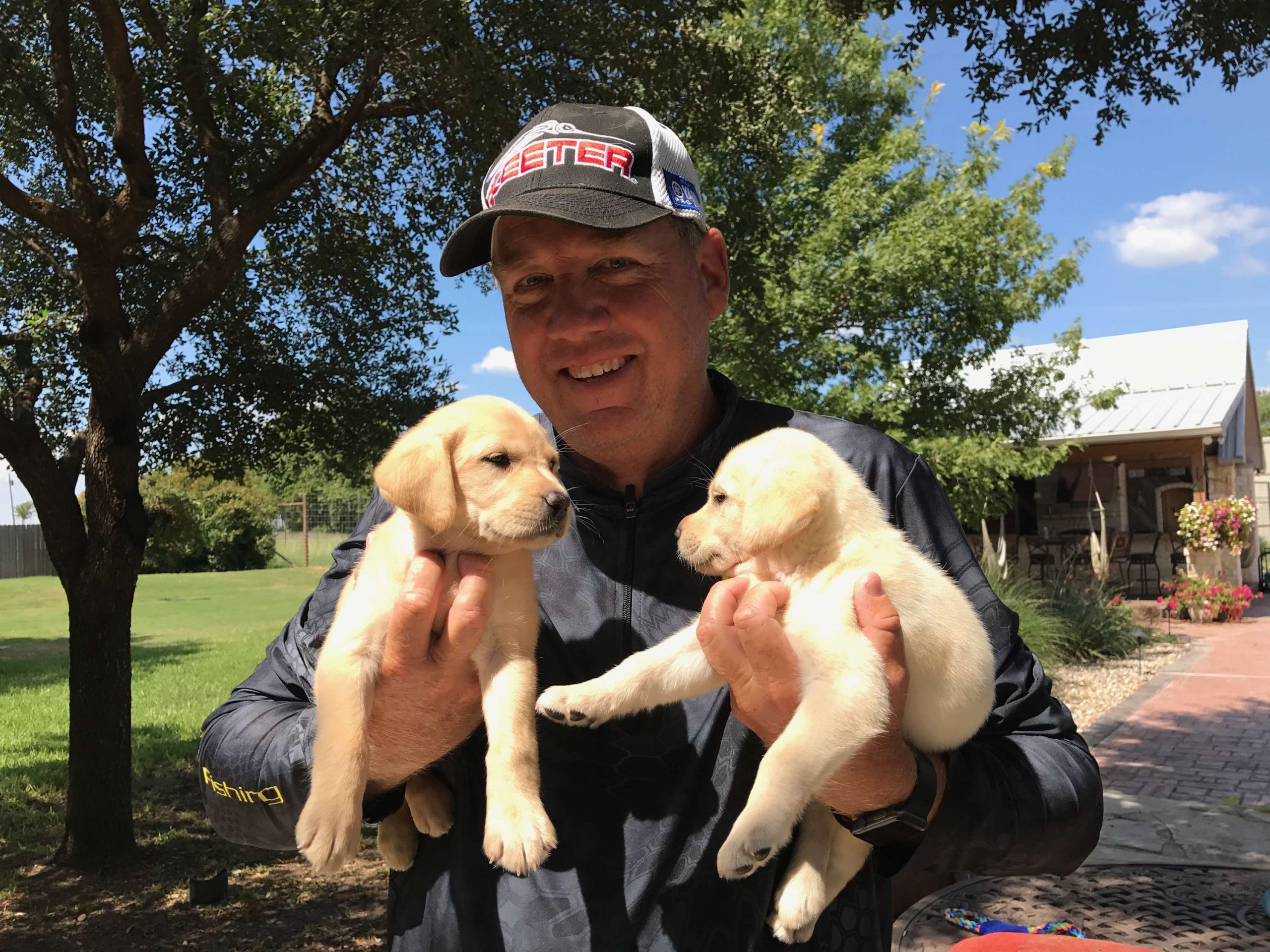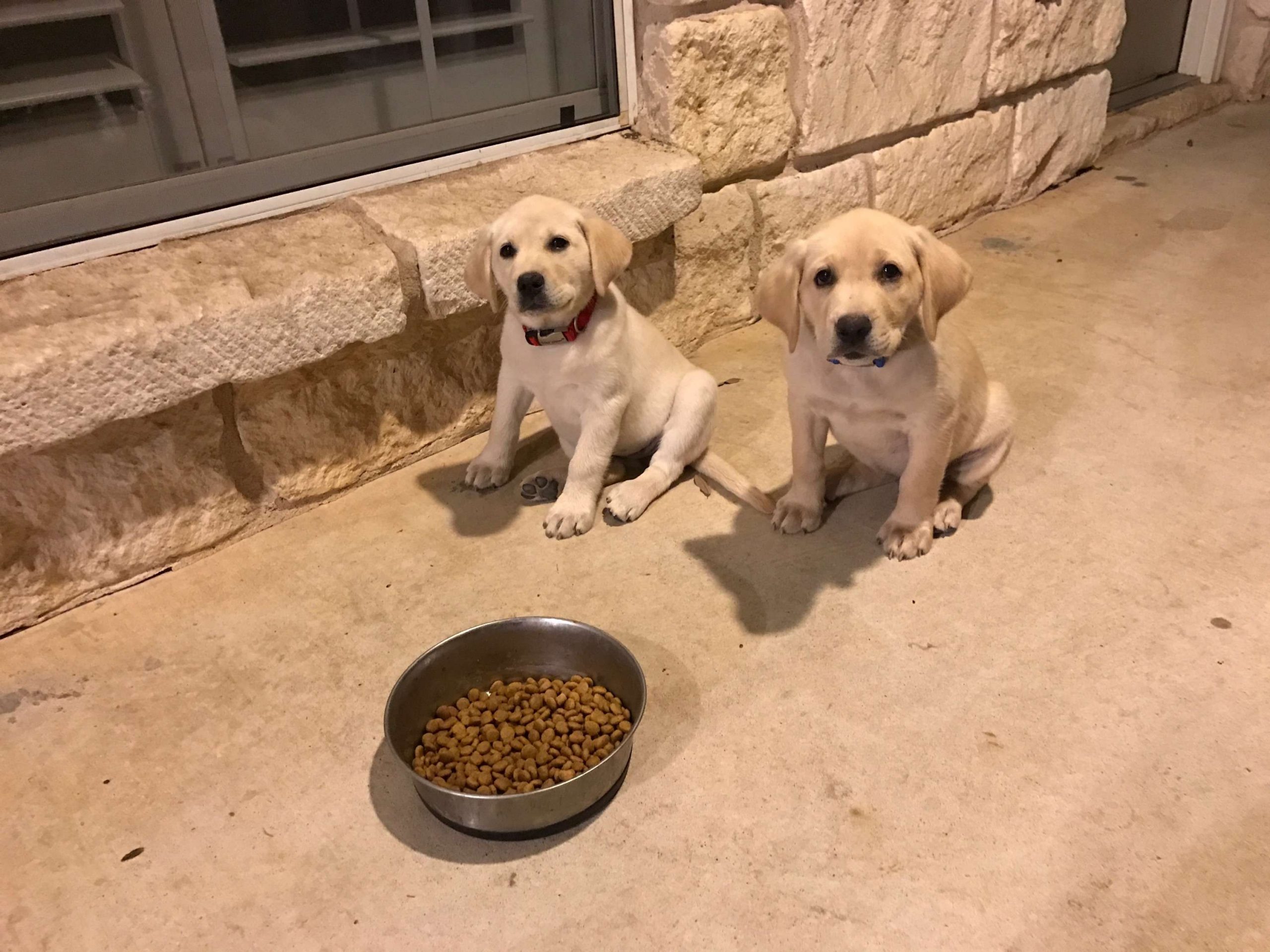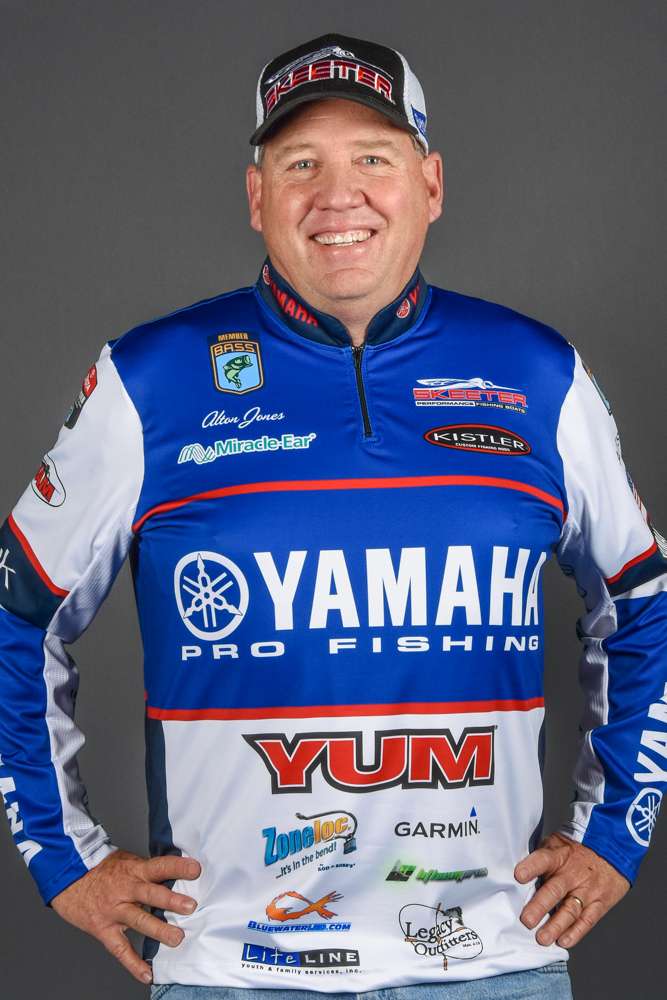
I want to take a moment to update you on something I mentioned a few weeks back — our new puppies. We got Lucy and Olive right after the Bassmaster Angler of the Year Championship, and in the past two months, they have more than doubled in size.
I started their training right away, and I’m happy to say that we’ve made great progress. They learn quickly and they actually were 90 percent potty trained within a few days. When they’re young, you’re going to have the occasional accident, but it’s 99 percent there so we can focus on the performance-based commands.
I’ve enjoyed training puppies for many years, and I like to start with three basic commands: sit, heel and come. One thing I’ve learned is that you should never have to teach a puppy to sit and stay; the word should have an implied stay command. If you teach that at an early age, it will prevent a lot of problems that you could have later on when you may need to break a dog of bad habits.
Likewise, anytime you tell a dog to come that should have an implied sit command. But teaching a dog to sit is one of the easiest elements of training. The way you do that is you find the thing that they love most in the world, which is their food, you put it about 3 feet in front of them, hold their chest up and gently push their backside to the ground and tell them to “sit.”
They’ll immediately get up and start walking toward their bowl, but you tell them “no” and scoot them right back to where you sat them. They’ll get the hint really quickly.
Now, anytime I get their food, they automatically sit. I can put the food down, leave the room for 10 minutes and come back to find them sitting there and waiting for me to use their name as the command to eat.

At this point, their sit, stay and heel commands are progressing well. Sit and stay are perfect, lay down is pretty good and heel is moving along quickly.
The next phase of training, which we started a couple of weeks ago was retrieving. The key to teaching this is figuring out which toy is their favorite. Once I determine this, I’ll use that particular toy solely for training.
Retrieving is the really important work that a Labrador is going to do, and you want to make sure that they perceive the activity in a way that will make them want to do it. Basically, you want this to be all positive.
You don’t want any bad memories associated with retrieving. When I pick up that toy I’ve identified as their favorite, I want them to think it’s all fun time.
I believe in laying firm foundations and progressing a puppy farther along the training at a reasonable pace. Therefore, the beginning stages of retrieval training aren’t about any of the fancy directional or multiple retrieves.
It’s just about the basic concept that when I throw something, you go get it, you lay it at my feet and you get rewarded. That’s all we’re working on. For the first month or so, it’s just a really fun game.
On that note, you don’t want to start any discipline around this part of the training really early. You just want to make sure they’re having fun and developing good habits.
It’s interesting; when I think about the principles involved in training puppies, there are some very real parallels to raising children. Now, let me clarify that there is simply no comparison between pets and people. The kind of love and commitment we have for our kids far exceed our attachment to the puppies.
The best way to train a dog is through positive reinforcement and that’s also been a big component of the way we’ve trained our children. We weren’t parents that “spared the rod.” When a spanking was appropriate, I’m not embarrassed to say that we administered one.
In every instance, it was done in an appropriate fashion, and we always made sure that if our children got spanked they knew why. And afterward, we always took time making sure they know that we love them.
When it comes to training those puppies, we do as much as we can through positive reinforcement and any time a swat is needed, you don’t want to do any more than you have to do to get their attention in such a way that they know they shouldn’t be doing whatever they did. After that, you want to love on them.
It’s a lot easier with puppies because they’re typically a little more willing and wanting to obey. With human children, you really have to teach that and trust the Lord to make them learn.
Thankfully, we’ve been greatly blessed in that regard.

